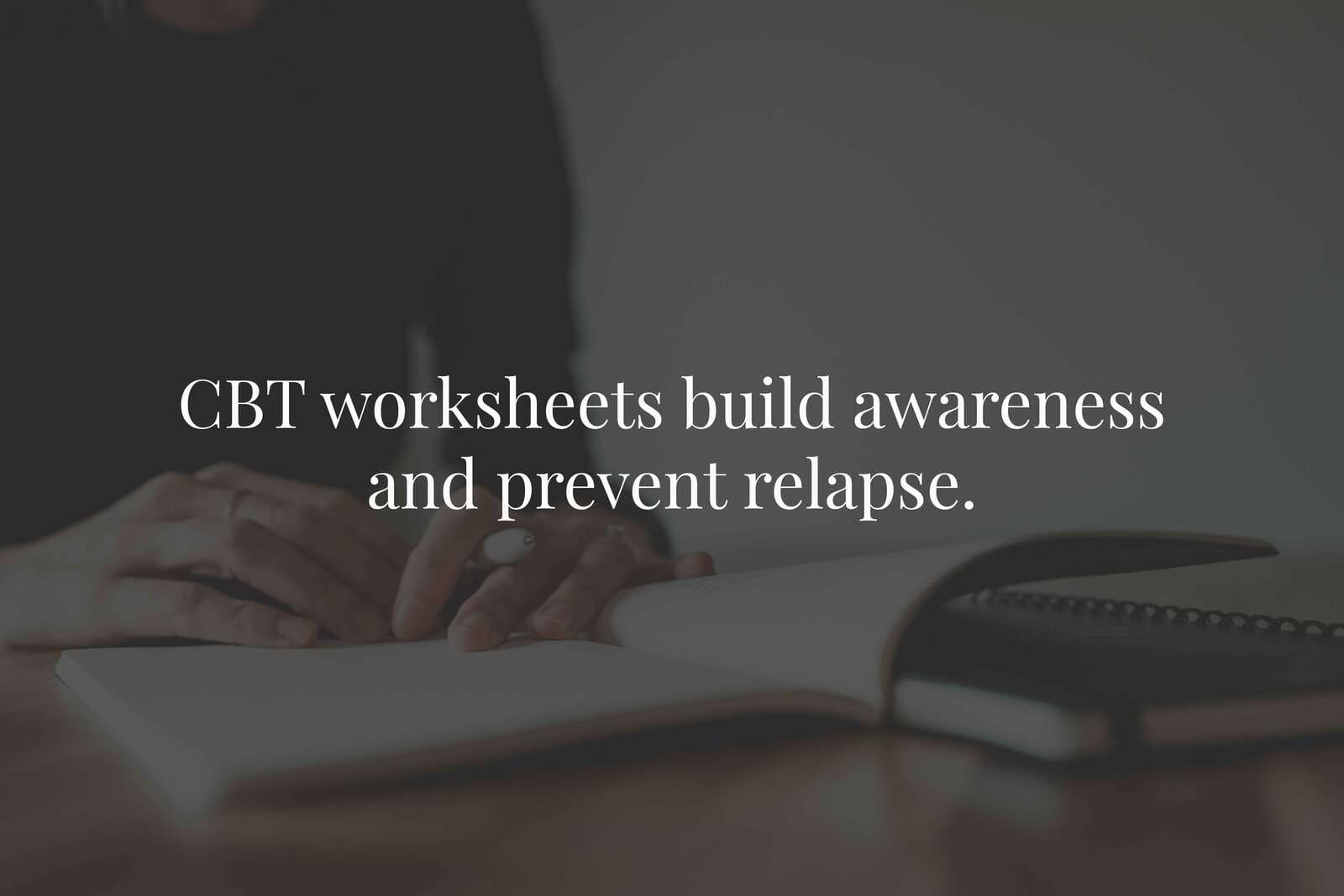Cognitive Behavioral Therapy (CBT) worksheets are structured tools that guide individuals through evidence-based techniques for challenging negative thoughts and behaviors. In addiction recovery, these worksheets help reinforce healthy coping mechanisms and increase self-awareness.

What Are CBT Worksheets?
CBT worksheets are written exercises that walk individuals through the process of identifying, analyzing, and reframing unhelpful thoughts. These tools are commonly used in therapy sessions, group work, and independent recovery programs.
How CBT Worksheets Aid Recovery
CBT worksheets are beneficial in recovery because they:
- Build self-awareness: Individuals learn to recognize patterns in thinking and behavior.
- Promote emotional regulation: Worksheets guide users through techniques that reduce emotional reactivity.
- Encourage accountability: Writing down thoughts and progress increases personal responsibility.
- Support relapse prevention: CBT worksheets help identify high-risk situations and build coping strategies.
Types of CBT Worksheets for Addiction Recovery
Several worksheets are particularly effective for those recovering from substance use disorders:
1. Thought Record Sheets
Thought record worksheets guide individuals through tracking automatic thoughts, feelings, and responses to triggering events. For example:
- Situation: “Had an argument with a friend.”
- Automatic Thought: “They hate me. I’m worthless.”
- Feeling: “Angry, sad, alone.”
- Alternative Thought: “We argued, but it doesn’t mean they hate me.”
2. Trigger Logs
These worksheets help identify what leads to cravings or urges to use. Key sections often include:
- Date and time
- Description of the situation
- Craving intensity (1–10)
- Emotions felt
- Response or coping method used
3. Coping Strategy Worksheets
These sheets list helpful responses to common triggers or stressors. They might include:
- Calling a sponsor or support person
- Practicing deep breathing or mindfulness
- Engaging in a distraction activity (e.g., walk, music)
4. ABC Worksheets
This classic CBT worksheet explores:
- A – Activating Event
- B – Beliefs
- C – Consequences (emotional or behavioral)
For example:
- A: Missed a job interview
- B: “I’m unreliable.”
- C: Felt ashamed, isolated, considered using
Challenging the belief ("I'm unreliable") helps stop the cycle of negative thoughts that lead to relapse.
How to Use CBT Worksheets Effectively
Using worksheets consistently is key. Here’s how to maximize their benefit:
- Complete them in real time: Don’t wait until the end of the day—fill them out as events happen.
- Be honest: Recovery depends on truthful self-assessment.
- Review with a therapist: Therapists can help reframe thoughts more effectively.
- Keep a folder or journal: Organize worksheets to track progress over time.

Why Worksheets Are Ideal for Self-Guided CBT
Not everyone has access to daily therapy. Worksheets make CBT techniques accessible between sessions or during moments of high stress. According to the National Institute on Drug Abuse, integrating CBT tools into daily routines can reduce relapse risk and increase engagement in treatment programs.

Digital CBT Worksheets and Apps
In today’s recovery landscape, digital worksheets and CBT apps offer added convenience. Many apps allow users to:
- Save their logs securely
- Access therapeutic exercises anytime
- Sync progress with clinicians
- Receive reminders to complete daily check-ins
Some free or low-cost options include MoodTools, CBT Thought Diary, and Recovery Record.
Benefits Beyond Addiction
CBT worksheets are also useful for managing:
- Anxiety
- Depression
- PTSD
- Eating disorders
This makes them a versatile tool for clients with co-occurring mental health conditions—a common scenario in addiction treatment.
Supportive Approaches That Reinforce CBT
To get the most out of CBT worksheets, individuals may combine them with:
- Daily journaling: Tracks emotional patterns not captured in structured worksheets.
- Mindfulness practice: Enhances awareness of thought and body reactions.
- Group therapy: Provides accountability and peer insight.
- Professional CBT therapy: Guides deeper reframing and reinforces motivation.
You can learn more about the core structure of CBT and how it’s used in professional rehab settings to support long-term recovery.
Applying CBT to Other Areas of Recovery
CBT principles are often woven into related tools and strategies that enhance recovery outcomes.
CBT Exercises That Help in Early Recovery
Many people use simple yet powerful CBT activities, such as journaling urges, using roleplay techniques, or practicing “reality testing,” to build habits that replace impulsive behaviors.
How to Use a CBT Thought Record to Challenge Cravings
Thought records are especially helpful during early cravings. These tools break down high-risk situations into manageable thoughts and teach recovering individuals how to restructure thinking patterns quickly.
CBT vs. DBT: Understanding the Key Differences
While CBT is more structured and logic-based, DBT introduces emotional regulation and mindfulness techniques. Understanding their differences helps individuals find the right fit for their recovery stage.



